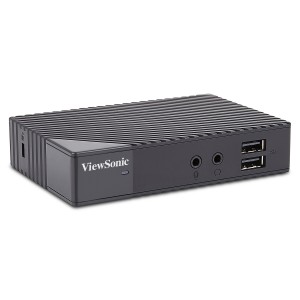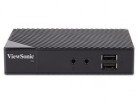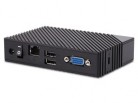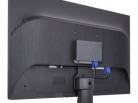I covered the benefits of virtual desktop environments previously in the Userful review but here's a quick and dirty synopsis: lower power consumption, less noise, more security, updates can be sent out throughout all computers simultaneously from the host machine, and a choice of different operating systems. Virtual desktops do indeed save on electricity and without numerous cooling fans and hard drives or optical drives spinning are inherently quieter. This doesn't seem like a big deal but imagine a room full of computer towers each with their fans and drives plus all the heat produced with those traditional designs. Security is one of the main bonuses in my eyes as one person controlling the host computer that all the virtual desktops are connected to controls the security. Setup the host computer in a locked room and now the users have no access to install software or make changes. Another advantage is that updates can all be carried out from the host computer - this cuts down on work interruptions as well as only needing limited personnel to do the updates. Ever try to roll out updates in a computer lab full of towers? Lastly, different virtual stations can have different operating systems. Chrome OS, Linux, and Windows can all be running simultaneously and monitored from the host machine. As Chrome OS and Linux both have no licensing fees this has a huge impact on the cost to rollout an installation.
The Hardware
ViewSonic provided two SC-U25 Zero Clients for this review. Out of the box the zero client is impressively small. On the front of the unit are two USB ports, a mic input, and headphone jack. On the rear are the power input, power switch, Ethernet hookup, two more USB ports labeled for the mouse and keyboard input, and the standard monitor port. In the packaging are the switching power supply, a stand/mount, the software disk, and a quick start guide. On the left side of the unit is a clever slot for installing a lock much like the locks on laptops. That's a nice way to make sure something doesn't get removed unnecessarily.
The mount is clever as it is VESA compliant - you can screw the zero client into the back of a monitor for a neat installation. If you have a wall mount installation for your monitor a little clever installation wasn't hard to figure out at all. Likewise for a stand that holds dual monitors. Included with the switching power supply is the proper plug design for your region. For me this was North America.
Software and Setup
I covered the software setup more in the original Userful review but to break it down you'll need a server computer, gigabit switch (more on this later), and the install disk included with the ViewSonic Zero Clients. The Userful Multiplatform software is Linux based. Insert the disk into the drive and restart the computer to begin the install. I'd recommend a clean install on a system that doesn't have an operating system as you'll need to partition the drive not unlike any other Linux install. Once the Userful software is installed you can install the other operating systems you are going to give users access to. The actual interface within the Userful software is in its Linux installation. From here you can control which operating system each user will have access to. I already had Userful installed on a host computer from my previous review.
Now we can setup the hardware included in the ViewSonic package. I mounted the zero client to the back of a monitor with the VESA mount. Next was as simple as connecting the power supply, ethernet cable, and USB mouse and keyboard. Here's where I have to mention that you need to use a router capable of very high speeds so that the user has a good experience. This isn't the time to try and save money with a 10/100 router. Slow throughput here will mean that the operating system will lag for the user. The idea is to give them a seamless experience and a gigabit switch is what will do that.
I already had a two zero client install that I had done with the original Userful review. Now I just added in the ViewSonic equipped gear. Installing the new zero clients was not at all different than the previous install. ViewSonic recommends 20 zero clients for one host/server. That seems pretty reasonable but of course this is all dependent on the processing power of the host machine.
The actual install was smooth. Now onto the performance. While on the ViewSonic Virtual Clients I had no lag whatsoever. The video is very good and surprising at this price point. Having additional USB ports is very much appreciated.
Conclusions
Each zero client at the ViewSonic website is $199.99. If you happen to be upgrading from an older workstation install you probably already have a monitor, keyboard, and mouse. The big cost here is in the host machine and gigabit switch. That said, even with a new monitor, keyboard, and mouse you are still at a much lower initial investment plus now you have a more secure network.
ViewSonic has made their name with their displays. The video quality of the zero clients was very impressive. This is a very good design that deserves the attention of anyone who needs a virtual desktop environment. Clever features like extra USB ports and a way to secure the unit so it can't be stolen show that a lot of thought went into the design of the actual zero clients. I wholeheartily recommend Viewsonic's VDI solution as it couples this great zero client with the great Userful Multiplatform software.















